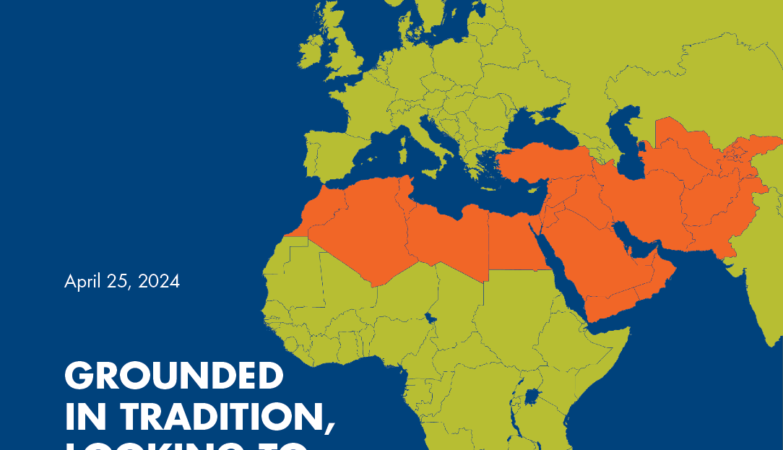Dubai, United Arab Emirates, January 22, 2024: As the number of airline passengers has exploded to surpass the high pre-pandemic levels, airports across the world have been expanding and improvising their security regime and devoting wider resources to make the systems and processes smoother and free of glitches and shortcomings.
The entire aviation value chain has been playing a key role in keeping the airports safe and secure as threats have remained a priority since the start of the 21st century. The threats continue to evolve and determine the present and future framework of airport security on the planet.
By 2030, it is expected that the better use of data and new technologies and processes will all be involved in mitigating much of the checkpoint stress passengers endure now. Airport security is continuously being expanded and upgraded through building wider collaborative relationships with governments, aviation regulators, and airport operators.
Most experts believe that the foundations for aviation security in 2030 are already in place but there are issues to be resolved and improvised, and standards need to be determined for successful product design, with facial recognition and biometrics becoming the most coherent part of the aviation security infrastructure. The improvements to and expansion of airport security are crucial for the smoother movement of about seven billion air passengers by 2030.
The trend is towards moving the airport security processes off-site across several countries including the Middle East region, to cope with the rising passenger numbers and limited infrastructure development, according to officials of the Airports Council International (ACI-World) whose members operate 1925 airports in 171 countries, including the DXB, the world’s top airport for international passengers.
Technologies were being tweaked for newer and emerging security environments and crucial data getting shared along the entire passenger journey to deal with threats including cybercrimes and explosive devices, according to the International Air Transport Association (IATA).
The world’s leading experts and officials will discuss the current and future of aviation/airport security, during their participation at the upcoming Airport Show in Dubai in May, to recommend measures to fill up the gaps and improve the systems and procedures.
The 23rd edition of the Airport Show, with its co-located events Air Traffic Control (ATC) Forum, Airport Security Middle East, and the Global Airport Leaders Forum (GALF), will be held over three days from May 14 to 16. The much-anticipated event will bring together the world’s leading airport suppliers and service providers, as well as aviation leaders and regional decision-makers to showcase the latest innovations and technologies. This year’s theme, Sustainability and Innovation, reflects the airport industry’s focus on embracing cutting-edge technology and greener initiatives to drive growth and efficiency.
Emaratech Group CEO, Thani Alzaffin said: As airports grapple with the complexities of rising passenger volumes, changing regulations, and the imperative to enhance competitiveness, our company stands at the forefront of addressing these challenges. Through innovative IT solutions and advanced technologies, we are empowering airports to fortify their safety, efficiency, and security measures. Our state-of-the-art solutions, including biometric identification, and artificial intelligence, contribute significantly to the modernization of airport security.
In the realm of smart travel, the company has been playing a major role in pioneering advancements, particularly in collaboration with the General Directorate of Residency and Foreign Affairs-Dubai (GDRFA-Dubai), Emirates Airlines, and Dubai Airports. It foresees a customer-focused experience achieved through a highly secured and integrated process that seamlessly encompasses all airport touchpoints.
The future of travel pivots significantly on the transformative power of biometrics technology and touchless passenger experiences. These innovations are designed to reshape the landscape of air travel, offering a multitude of benefits for all stakeholders involved especially when such seamless processes are introduced across countries, he said. From the perspective of airports and aviation authorities, the new experience holds immense promise.
The global airport security market size is expected to reach US$26 billion by 2030, according to a research report published by Spherical Insights & Consulting. It says the Middle East Airport Security Market faces unique security challenges primarily due to the complex geopolitical factors prevalent in the region. These challenges significantly impact how airports approach and implement security measures given their proximity to active conflict zones.
Middle Eastern airports are employing a combination of methods, including physical inspections and advanced technology. Passengers are screened through metal detectors, full-body scanners, and explosive trace detection machines. Additionally, hand luggage and personal items are subjected to X-ray scans to identify any prohibited or potentially dangerous items. In some cases, passengers may also undergo secondary screenings based on behavioral profiling or random selection, ensuring a thorough assessment of potential risks.
Middle Eastern airports use state-of-the-art baggage screening systems that employ X-rays and computed tomography (CT) scans to create detailed images of the contents of checked baggage. These technologies help security personnel identify any suspicious or prohibited items, including explosives, weapons, or contraband. Automated systems also flag anomalies for further inspection. Trained staff meticulously examine flagged items, ensuring that nothing poses a security threat before allowing baggage onto the aircraft.
They are at the forefront of adopting advanced security technologies to enhance safety. Biometric systems like facial recognition and iris scans are increasingly being used for identity verification and access control, streamlining the passenger journey while ensuring security. Additionally, Artificial Intelligence (AI) and Machine Learning (ML) algorithms are deployed to analyze passenger behavior and detect anomalies that may indicate potential threats.
Explosive Detection Systems (EDS) are being widely employed to identify explosive materials in checked baggage. These systems use sophisticated algorithms to analyze X-ray images and detect trace amounts of explosives, providing an additional layer of security.
Furthermore, Middle Eastern airports are investing in surveillance technologies, including high-definition CCTV cameras and video analytics, to monitor passenger and staff activities across the airport premises. Real-time intelligence sharing has been enabling airports to proactively respond to potential threats and adjust security measures accordingly.
The region’s airports also benefit from access to cutting-edge equipment and systems that enhance screening processes and improve security outcomes. They have aligned their security protocols with internationally recognized guidelines, ensuring consistency and compatibility with airports worldwide. Biometric systems, including facial recognition, iris scanning, and fingerprint recognition, are being widely adopted at Middle Eastern airports.
These technologies provide secure and efficient methods for passenger identity verification at various touchpoints, such as check-in, security screening, and boarding gates. Passengers can move seamlessly through the airport, reducing wait times and enhancing overall convenience while ensuring the highest levels of security.
Talking about the travel trends to 2050, an Oliver Wyman analysis says by 2040 more than 19 billion passengers will pass through world airports each year, and the global commercial aviation fleet will expand by 33 percent, to more than 36,000 aircraft by 2033. It noted: “Airports will be core drivers of industrywide change, while themselves being transformed in the process. Airports are, after all, where air travel journeys begin and end. Going forward, the passenger experience will be customized, on-demand, contactless, and efficient. The digitization of airports will enable a tailored end-to-end journey through the airport and will create new retail and commercial revenue opportunities.”
The transformation of passenger processing will drive a significant change in the internal layout of airport terminals where the future line of demarcation between the airside and landside is expected to be very different from today. “The reduction in check-in counters and security screening queues will provide new opportunities for commercial retail and relaxation spaces in terminals. By 2030, the expectation is that the integration of new technologies will enable airports to deliver passengers customized, on-demand services to improve their airport experience.
For passengers, touchless travel digital ID cards may replace paper passports by 2040, the year when the travel hub will be all about open-airport architecture, with physical and software design interfacing and allowing for touchless security and check-in, it said. By 2050, processes within airports will be fully autonomous, increasing the speed and quality of activities – from security to immigration and boarding.
Through coordinated efforts by governments and regulatory bodies, there is a prospect of having an internationally recognized digital identity for all passengers by 2050. By that year, it can be assumed that robots and automation will have taken on most of the current roles at airports. Zero-queue terminals will be a reality by 2050, with customized and pre-planned processes creating a seamless journey from home to destination, and back. Passengers will use their devices or travel and airport apps to control every aspect of their journey and experience. Remote processing and one-stop processing pods which may be available during the transit time to the airport, will simplify boarding and security procedures.












